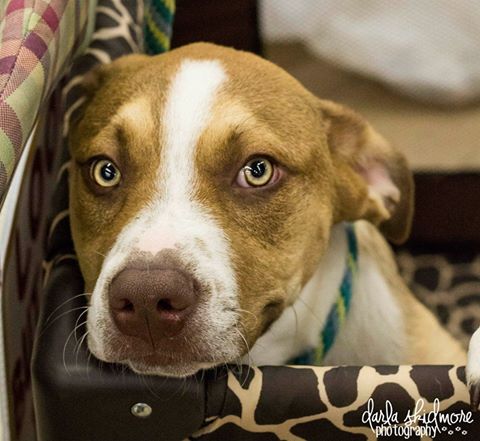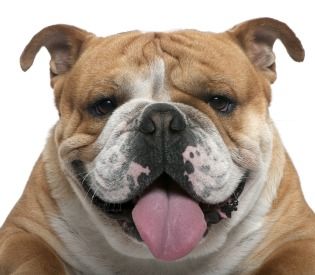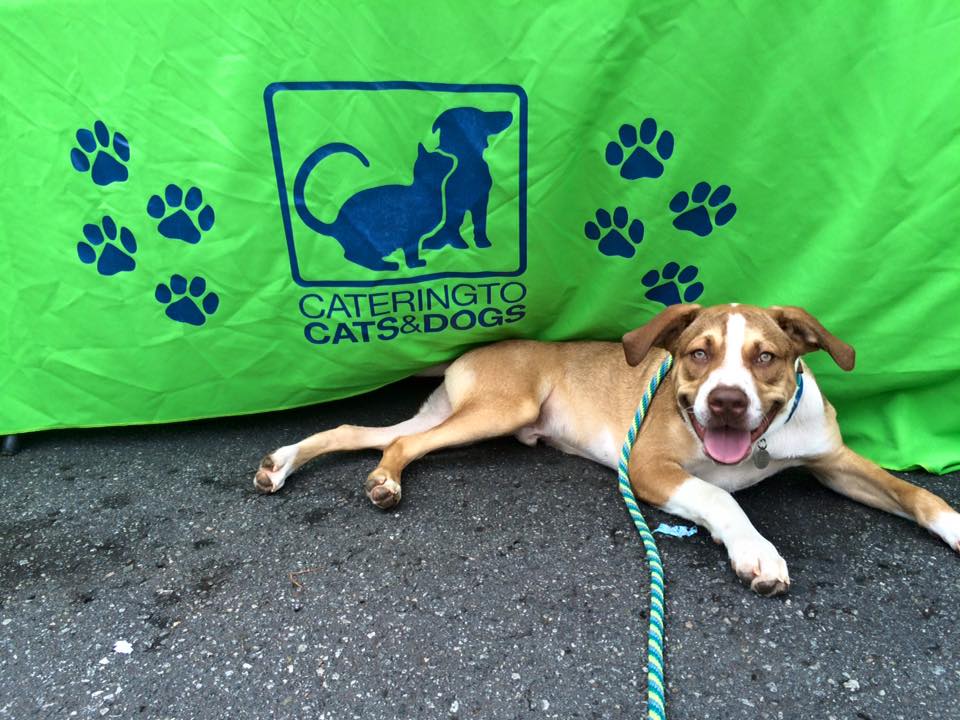 It has been about a week of ridiculous heat in my hometown. Summer temperatures that usually hover around 75 degrees have been spiking to 100 every day. Small talk between coworkers and strangers have turned from current events to the miserableness of this weather, and we are aching for the promised release to come (in another week so they say). We may spend these days dreaming of (or sitting in front of) our air conditioners, but what about our dogs? Did you know that dogs are just as susceptible to heat stress and heat stroke as humans are? Do you know how to prevent heat stroke in your dog, or what signs to watch out for? Check out our tips to these important signs below!
It has been about a week of ridiculous heat in my hometown. Summer temperatures that usually hover around 75 degrees have been spiking to 100 every day. Small talk between coworkers and strangers have turned from current events to the miserableness of this weather, and we are aching for the promised release to come (in another week so they say). We may spend these days dreaming of (or sitting in front of) our air conditioners, but what about our dogs? Did you know that dogs are just as susceptible to heat stress and heat stroke as humans are? Do you know how to prevent heat stroke in your dog, or what signs to watch out for? Check out our tips to these important signs below!
Keeping Cool: Preventing Heat Stroke
- Always provide plenty of water for your dog to drink at all times and check their bowl often! Changing their water frequently will help stimulate them to drink more often.
- Never leave your dog locked in a car on a hot day. Even on a “cool” 70 degree day, you can expect the inside of your car to heat up fast. Yes, even if you leave the windows open and park in the shade.
- Exercise your dog during the morning or evening hours when the temperature is lower. If you have to exercise your dog in hot weather, make sure to reduce the exercise length and/or intensity!
- Dogs regulate their body temperatures largely through panting, but also via the pads of their feet, their ears and stomachs. If your dog is warm, letting them lie on a cool surface can help. You may also consider putting down a cool, moist towel for them to lay on. Please note: a cool towel is great to prevent heat stroke, but should not be the primary means of treating the condition!
- Don’t forget that asphalt and cement can become extremely hot when the temperature spikes. This can lead to burned paws very quickly! If the ground is too hot for you to stand on barefoot, it is too hot for your dog too!
- Consider getting your pet a summer haircut. This is especially important for dogs with a thick coat.
 Remember that dog’s with buy finasteride without rx smooshed faces (think a bull dog or boxer) are especially susceptible to heat stroke during hot weather. The “smooshed in face” (brachycephalic is the technical term) makes it more difficult for them to breath and pant, which in turn causes them to overheat faster. Pay extra close attention to such breeds and make sure to take extra precaution to prevent heat related issues.
Remember that dog’s with buy finasteride without rx smooshed faces (think a bull dog or boxer) are especially susceptible to heat stroke during hot weather. The “smooshed in face” (brachycephalic is the technical term) makes it more difficult for them to breath and pant, which in turn causes them to overheat faster. Pay extra close attention to such breeds and make sure to take extra precaution to prevent heat related issues.- Use common sense! Simply stopping for a moment to consider your actions (and those of your dog’s) during the hot weather can go a long way to prevent heat stroke or heat related stress in your dog.
Signs & Treatment of Heat Stroke
Heat stroke is a very real danger in dogs. How do you recognize heat stroke? Some common signs include:
- Excessive panting.
- Reddened gums and tongue.
- High body temperature (above 103 F or 39.5 C for dogs)
- Excessive drooling
- Dehydration
- Weakness/listlessness/confusion
- Vomiting and diarrhea
- Increased heart rate
 If you notice any of these symptoms move your dog out of the heat and into a cool, shady spot immediately! Heat exhaustion can set in and become deadly very quickly, so paying close attention is vital. Lowering their temperature is key, but cooling them too quickly can also be dangerous. While cooling your dog down, be sure to check the temperature rectally every 5 minutes and stop cooling your pet once their temperature has gone down to 103 F or 39.5 C. Water works best to bring down a dog’s body temperature. Depending on your situation, you might place your pet (slowly!) in tepid water baths, hose them down (make sure the water isn’t ice cold) or pour water over them. Ice baths and cool towels left on your dog may sound tempting, but can actually be detrimental to the cooling process and are not recommended. Cooling should only be used as initial emergency treatment: a full work up from your veterinarian is absolutely necessary – even if your dog seems to be doing better, serious internal injury can occur quickly during heat stroke. Heat stroke can be a frightening experience for everyone involved, but by using some common sense and following the preventative steps above, even the dog days of summer won’t be able to get you (or your dog) down!
If you notice any of these symptoms move your dog out of the heat and into a cool, shady spot immediately! Heat exhaustion can set in and become deadly very quickly, so paying close attention is vital. Lowering their temperature is key, but cooling them too quickly can also be dangerous. While cooling your dog down, be sure to check the temperature rectally every 5 minutes and stop cooling your pet once their temperature has gone down to 103 F or 39.5 C. Water works best to bring down a dog’s body temperature. Depending on your situation, you might place your pet (slowly!) in tepid water baths, hose them down (make sure the water isn’t ice cold) or pour water over them. Ice baths and cool towels left on your dog may sound tempting, but can actually be detrimental to the cooling process and are not recommended. Cooling should only be used as initial emergency treatment: a full work up from your veterinarian is absolutely necessary – even if your dog seems to be doing better, serious internal injury can occur quickly during heat stroke. Heat stroke can be a frightening experience for everyone involved, but by using some common sense and following the preventative steps above, even the dog days of summer won’t be able to get you (or your dog) down!
